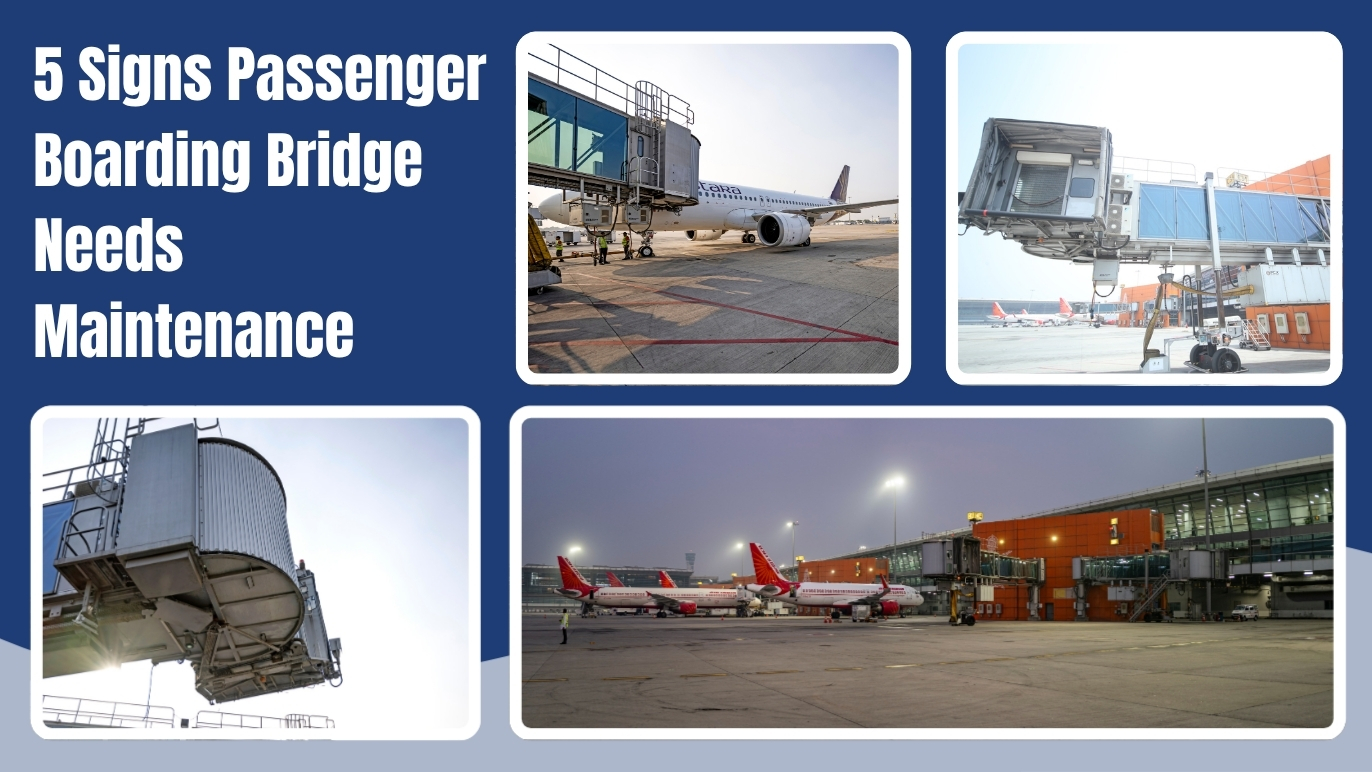
Executive Summary
Passenger Boarding Bridges (PBBs) are among the most heavily used assets in an airport environment. They operate through thousands of cycles each year, supporting both passenger movement and safe aircraft interface. Yet many of the early warning signs of deterioration remain unnoticed until the system reaches a critical point.
This expanded write-up highlights five major indicators that suggest the need for proactive maintenance intervention. Identifying these signals early allows airport operators to transition from reactive firefighting to structured preventive maintenance, enhancing safety, reducing downtime and optimising the lifecycle cost of these high-value assets.
A well-functioning PBB has predictable behaviour, smooth movement, consistent alignment and quiet operation. Any deviation from this predictable pattern warrants immediate inspection.
These irregularities often result from:
Operational risk: Even minor misalignment can cause aircraft door-frame damage, which may lead to costly claims and operational delays. Abnormal motion is almost always a precursor to larger failures, making early intervention critical.
As exposed steel structures, PBBs endure some of the toughest environmental conditions on the airside.
Environmental elements, such as high humidity, temperature extremes, de-icing chemicals, jet blast and coastal salt exposure, cause progressive deterioration.
Structural fatigue affects the bridge’s stability and telescoping accuracy. What starts as minor corrosion can escalate into structural warping, misalignment and ultimately unsafe docking conditions. Refurbishment or reinforcement is far more cost-efficient when planned early rather than executed after a structural failure.
Modern PBBs are technology-intensive, incorporating advanced safety, sensor and automation systems to ensure safe, efficient operation.
Failures often arise from:
A malfunctioning control system can quickly escalate into a safety incident, passenger injury, aircraft fuselage damage or a complete gate shutdown. Proactive diagnostics and periodic calibration are essential for ensuring safety integrity.
Maintenance logs serve as the most objective indicator of asset health.
A rising trend in repair frequency usually indicates underlying problems such as component fatigue, ageing systems or inadequate preventive maintenance.
“Fixing only what breaks” may work temporarily, but for high-criticality equipment like PBBs, it dramatically increases lifecycle cost and risk exposure.
Many PBBs remain in service for 15–25 years. However, airport operations evolve, aircraft types, turnaround times and environmental conditions shift over time.
Even if the PBB continues operating normally, these “silent” stressors accelerate wear.
Operating beyond design limits shortens structural and mechanical life and increases the rate of failure across motors, sensors, telescopic sections and lifting mechanisms. Early recalibration or equipment strengthening helps sustain operational reliability.
Understanding and acting on these five indicators, movement irregularities, structural degradation, safety-system faults, increased downtime and operational mismatch, gives engineering teams a powerful advantage. Proactive maintenance preserves safety, enhances asset reliability, reduces aircraft damage risk and ensures uninterrupted gate operations.
“Passenger boarding bridges rarely fail without warning, the challenge is recognising the signals before they disrupt operations. When vibrations, slower docking cycles or inconsistent alignment go unnoticed, risk quickly shifts from inconvenience to operational and safety exposure. At GEMS, we view PBB maintenance not as a repair task but as a critical reliability intervention that protects turnaround time, passenger experience and airline trust.”
— Roy Sebastian, CEO GEMS
GEMS provides comprehensive airport engineering and management services including asset maintenance, predictive analytics, innovation deployment, GSE optimisation and operational oversight.
For specialised support:
📧 Rohitkumar.Singh@gmrgroup.in
📞 +91 97171 99753